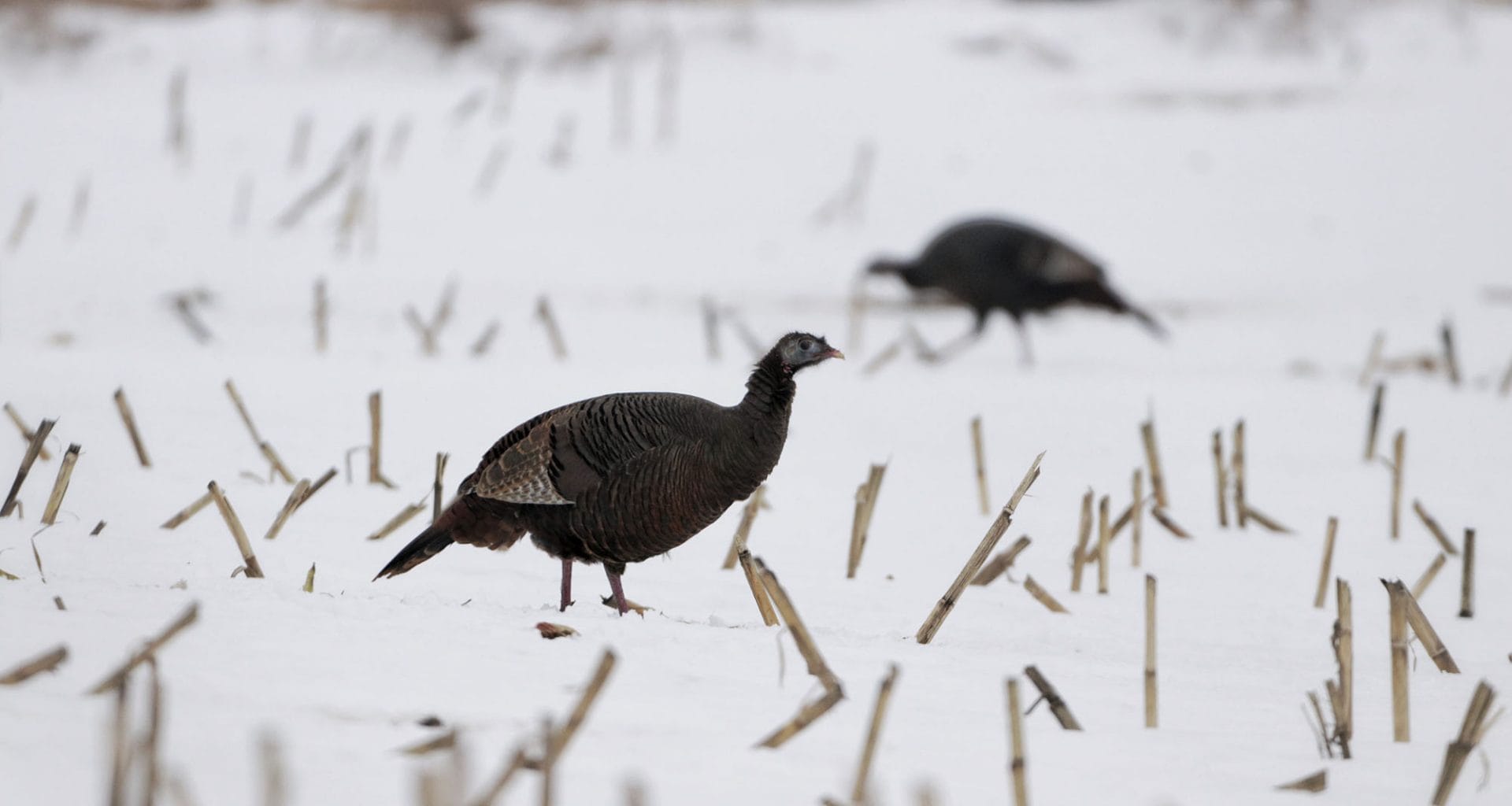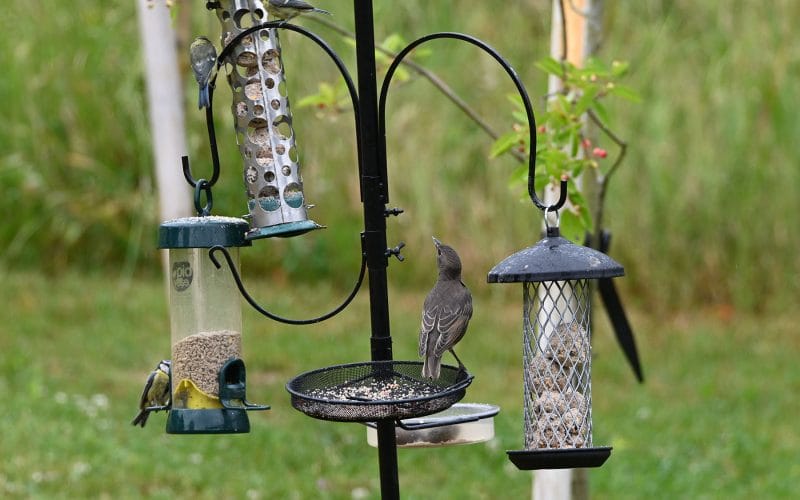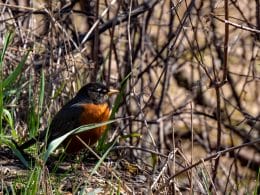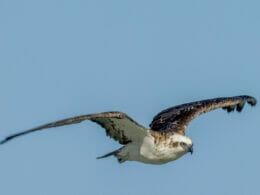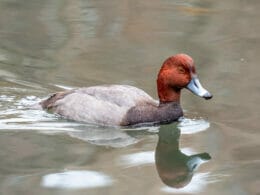Turkeys are quite large, with wings that are too weak to carry them in flight. Still, turkeys, especially wild ones, can fly around a hundred yards per flight, thanks to their strong chest muscles which help power their wings just enough to get them to safety. So, how fast can a spooked turkey run? Keep reading to find out.
While their wings might be weak, their hind limbs are designed for sustained use. They help provide these land-based birds with the power they need to run, especially when there’s danger nearby. In fact, when it comes to running, turkeys are one of the ten fastest birds known to man.
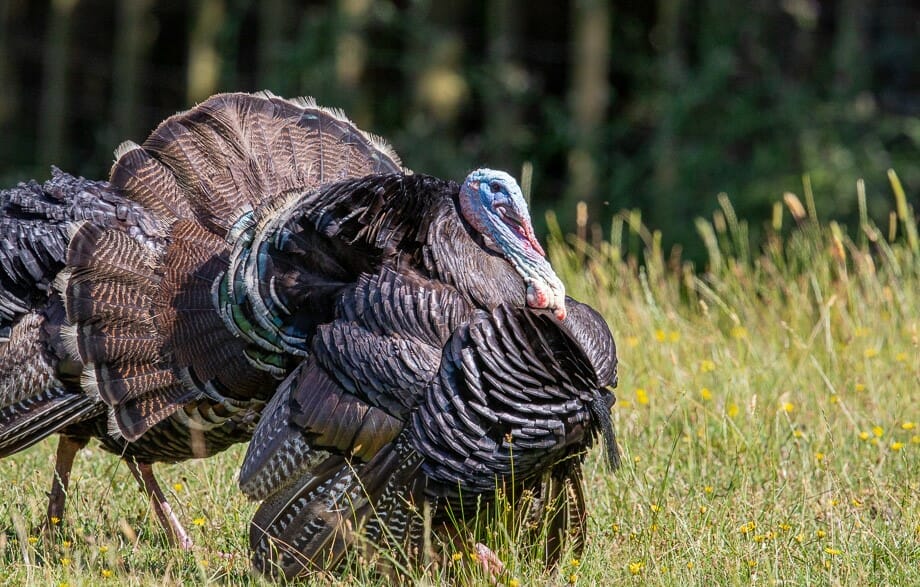
How Fast Can a Spooked Turkey Run?
With the help of their powerful legs, domestic turkeys can take off running in a matter of seconds. Their speeds average 20 miles per hour.
Author Note: Wild turkeys aren’t as heavy as domestic ones. So, they can run slightly faster, reaching top speeds of nearly 25 miles per hour. That’s about five miles per hour slower than a cat’s running speed! Pretty impressive, huh?
Turkeys vs Other Large Birds
We compared the running speed of a turkey to that of a cat, but how do turkeys compare against the two fastest running birds known to man?
The Ostrich
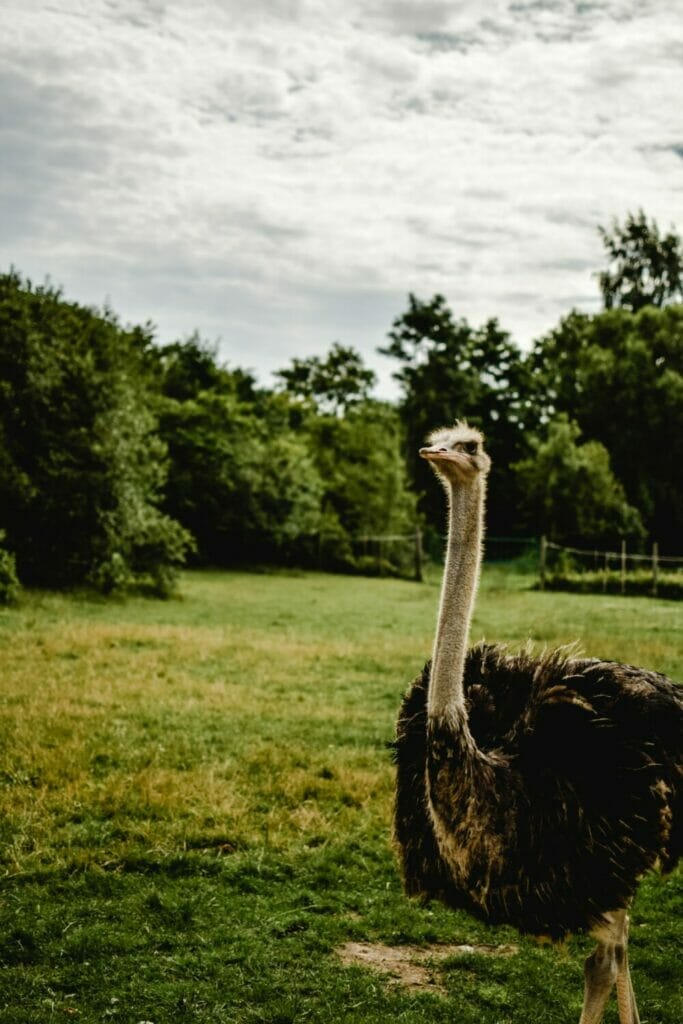
Ostriches aren’t only the world’s largest birds; they’re also the fastest. Their long legs give them speed and momentum to move at over 45 miles per hour.
Ostriches are so nimble that they can cover 16 feet in a single stride! What they lack in flying ability, they more than make up for in speed.
The Rhea
Rheas are part of the Ratite family; a group of large flightless birds like the emu, cassowary, and kiwi. The Rhea bird has powerful legs and large wings. They work together to give it momentum when running.
Author Note: Rheas have a running speed of up to 35 miles per hour. Their special talent is running side-to-side to confuse their predators and gain a head start.
How Fast Can Turkeys Fly?

Domestic turkeys are heavier and bulkier than their wild counterparts. So, they’re not as adept at flying.
Wild turkeys are a bit more proficient flyers. When they’re spooked, wild turkeys are known to take flight. Surprisingly, they can fly up to 50 miles an hour!
Do Turkeys Roost in Trees?
Turkeys spend almost 90% of their day on the ground, foraging for food. These land-based birds have an excellent daytime vision and a 270-degree field of vision. They’re always on alert for both prey and predators, making them the ultimate multitaskers!
After all that hard work, turkeys need their sleep. So, when the sun sets, they roost in the trees until the early morning.
Author Note: These large birds can fly 50 feet straight up in search of a comfortable perch to settle down for the night. This provides them with a bit of protection from nighttime predators, especially since they have poor night vision.
How Far Can Turkeys Travel When Foraging?
Wild turkeys can travel a mile or two per day. It mainly depends on their environment and how far they have to travel to get to food and water.
The home range of wild turkeys can be anywhere between 370 and 1360 acres. This area typically consists of a combination of grass cover and trees.
Turkey Trivia
Now that we’ve talked about how fast a turkey can run and fly. It’s now time for some turkey trivia.
Amaze your friends and family with these fun facts.
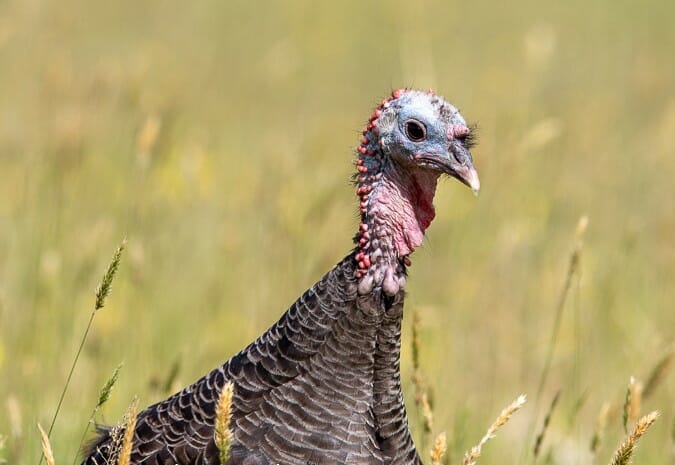
Male Turkeys
- Adult male turkeys are called ‘Toms’ and first-year males are ‘Jakes.’
- Toms are also referred to as ‘gobblers’ in reference to the ‘gobble’ sound they make. This is usually when they’re announcing themselves to the females during mating season.
- Male turkeys weigh between 16 and 22 pounds.
- To fight off enemies, gobblers have sharp spurs on their legs. These spurs, called keratin talons, grow sharper and longer as they age.
- Males have tufts of feathers that resemble a beard. It grows to about seven inches.
- There’s an appendage on their face called a snood. The length of a snood is linked to male turkey health, male dominance, and good genes.
- There’s also a wattle, which is the red dangly bit under their chins.
- Males have few feathers at the top of their heads.
- The head and neck areas of the gobbler are paler in color, compared to a female’s because there’s less plumage.
- After the mating season, which is in the spring, turkeys group together in males-only flocks. They wander around foraging in separate areas from the females.
Female Turkeys
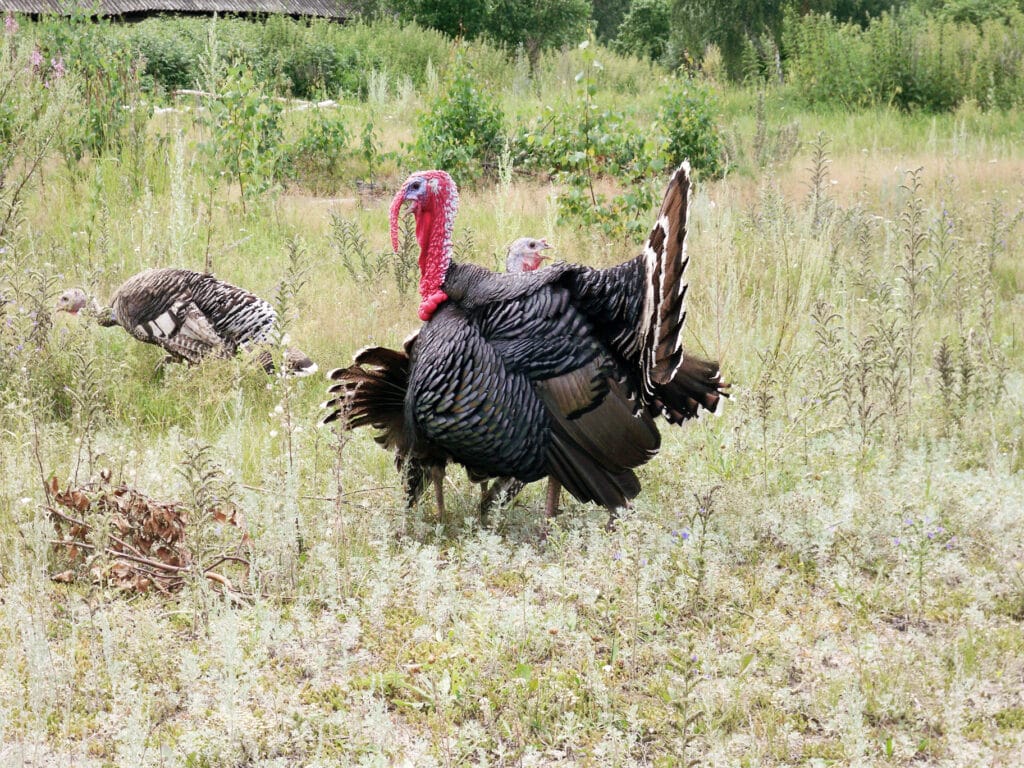
- Female turkeys are called hens. They’re smaller than the males, with an average weight of 8 to 12 pounds. Plus, hens have shorter necks and legs.
- Hens have no beards or spurs. There have been rare occasions where hens may develop beards. These are usually much shorter and thinner than those of the male turkey.
- They’re characterized by their light brown feathering on their chest.
- Like the males, hens have snoods, wattles, and a scattering of feathers on their heads.
- A first-year hen is called a ‘Jenny.’ Jennys weigh anywhere from five to seven pounds.
Egg Laying
- Turkeys are ground-nesters. They set up their nests using dead leaves at the base of trees or under thick shrubbery.
- Hens lay one egg per day over a period of two weeks, laying between 10 and 12 eggs in that time.
- They remain with their females-only flock to feed until it’s time to lay an egg. Then, they return to their flock.
- Hens don’t incubate the eggs until they’ve laid all of them. During this time, the eggs are well hidden, but they’re still left uncovered and unheated.
- If the hens feel danger approaching, they’ll make an alarm call. They also pretend to flee away from the location of the nest, in hope of keeping the intruder away from the nest.
- Once a hen has laid all her eggs, she sits on them to keep them warm and secure.
- During incubation, the hen only moves once an hour when she wants to change the position of the eggs.
Incubation and Hatching
- The incubation period typically lasts an average of 28 days starting from when the last egg was laid. The embryos start developing as soon as the hen begins her incubation period.
- When it’s time for them to hatch, baby turkeys will move around inside the shell. Then, they begin to chip away at the large end of the egg.
- Then, one by one, the eggs will do what the experts refer to as ‘synchronous hatching.’ in other words, they all hatch at the same time. This often happens within an hour of one another.
Precocial Poults
- Baby turkeys are called poults.
- They hatch with open eyes and fuzzy feathers.
- Poults are precocial, which means they’re ready to walk and run as soon as they hatch.
- They can follow their mother out of the nest within a day after hatching. This keeps them close by their mothers’ sides while foraging. It also keeps them safe from predators.
Diet
- Adult turkeys eat acorns and other seeds. They may even eat small reptiles, such as frogs, lizards, and salamanders.
- To prepare for winter, turkeys increase their grazing. This is usually in autumn during the beechnut and acorn crop season.
- The diet of a baby turkey is a bit more limited. It typically consists of insects, such as grasshoppers and crickets. They also like to feed on seeds and berries.
Behavior

- Turkeys have amazing daytime vision almost three times better than humans.
- Feeding time starts in the early morning until early afternoon. Then, turkeys take a break before resuming their search for food.
- A turkey’s gender is determined by its track prints. Males have a large print with a long middle toe that can reach over four inches long. Hens have a much shorter middle toe.
- Gender is also determined by turkey droppings. J-shaped poop is produced by females, while males produce spiral-shaped poop.
- During summer, males and females stay apart and forage in separate areas. They return to the same foraging areas in both autumn and spring.
- By the end of March, gobblers begin their strutting and gobbling in hope of attracting a female hen in time for mating season.
- A flock of related male turkeys will join together to help only one of them when courting the females.
- In the spring, jakes and jennies are characterized by their uneven tail shape. They have white bars on the tips of their wing feathers.
- Turkey sounds are how they communicate with one another. Some can be heard over a mile away. These sounds include:
- Gobble
- Cutt
- Click
- Yelp
- Purr
- Tree call
Summary
So, how fast can a spooked turkey run? The average running speed of a turkey is 20 miles per hour. That’s pretty surprising considering its large size.
Turkeys run mainly to escape predators. Wild turkeys can also take it a step further and fly a hundred or so to try and get out of danger’s way.
Domestic turkeys, however, weigh more and have weaker wings. So, flying isn’t an option. Yet, they can still impress us with their agility and running speed! We hope you enjoyed this article on how fast can a spooked turkey run.
Fly high friends!
FAQ
Yes, it is. The Wild Turkey (Meleagris gallopavo) is a reportable bird on eBird because it was a native bird of North America. It is deemed native in the eastern and central states but feral in the west, north, Alaska and Hawaii.
Yes, different species of domestic turkey have been bred for keeping in yards and farms. Some of the breeds are Bourbon Red, Slate and White Holland.
Yes they are. Turkeys are curious and enjoy exploring. They have personalities and will bond with whoever feeds them.




